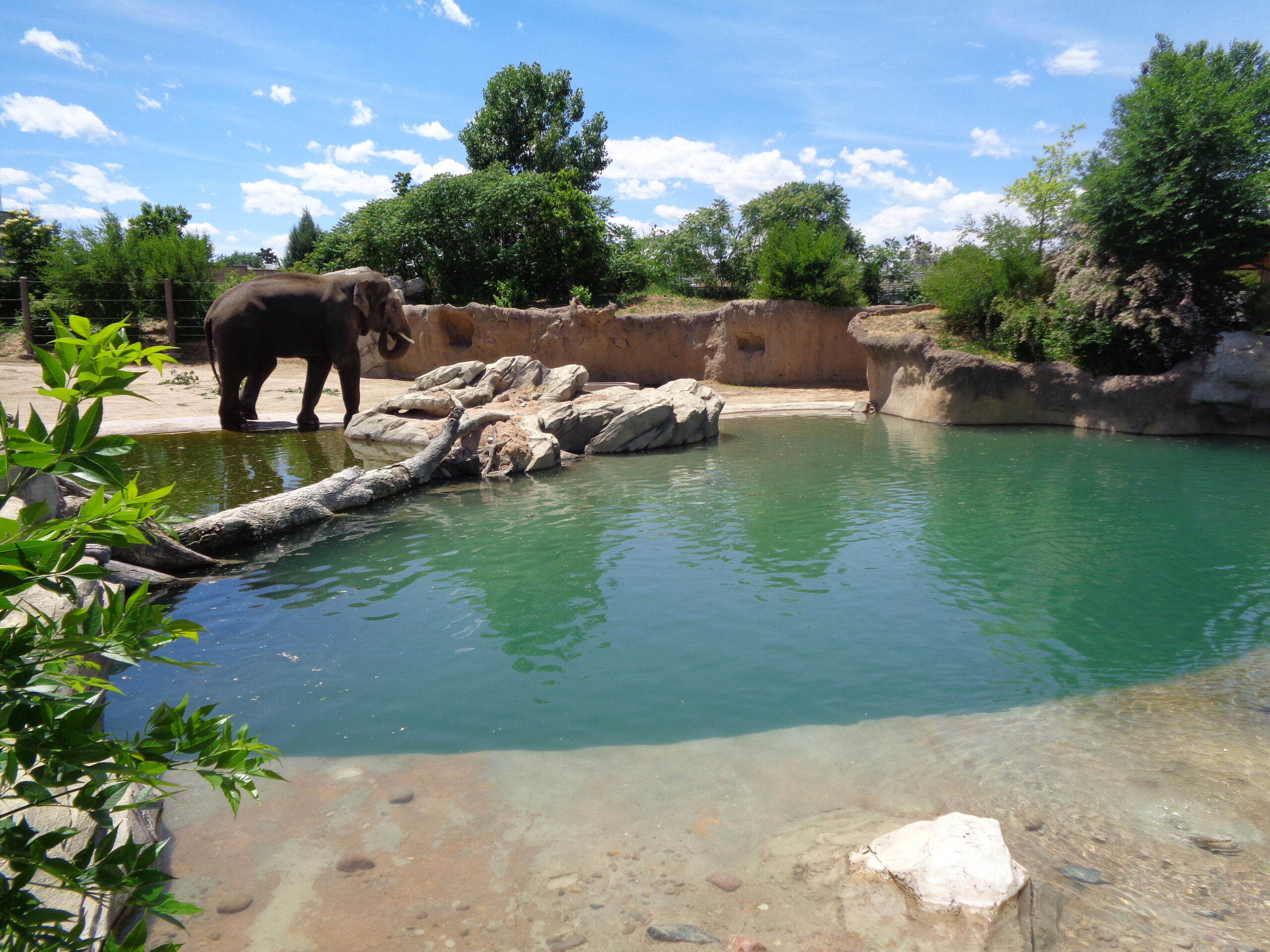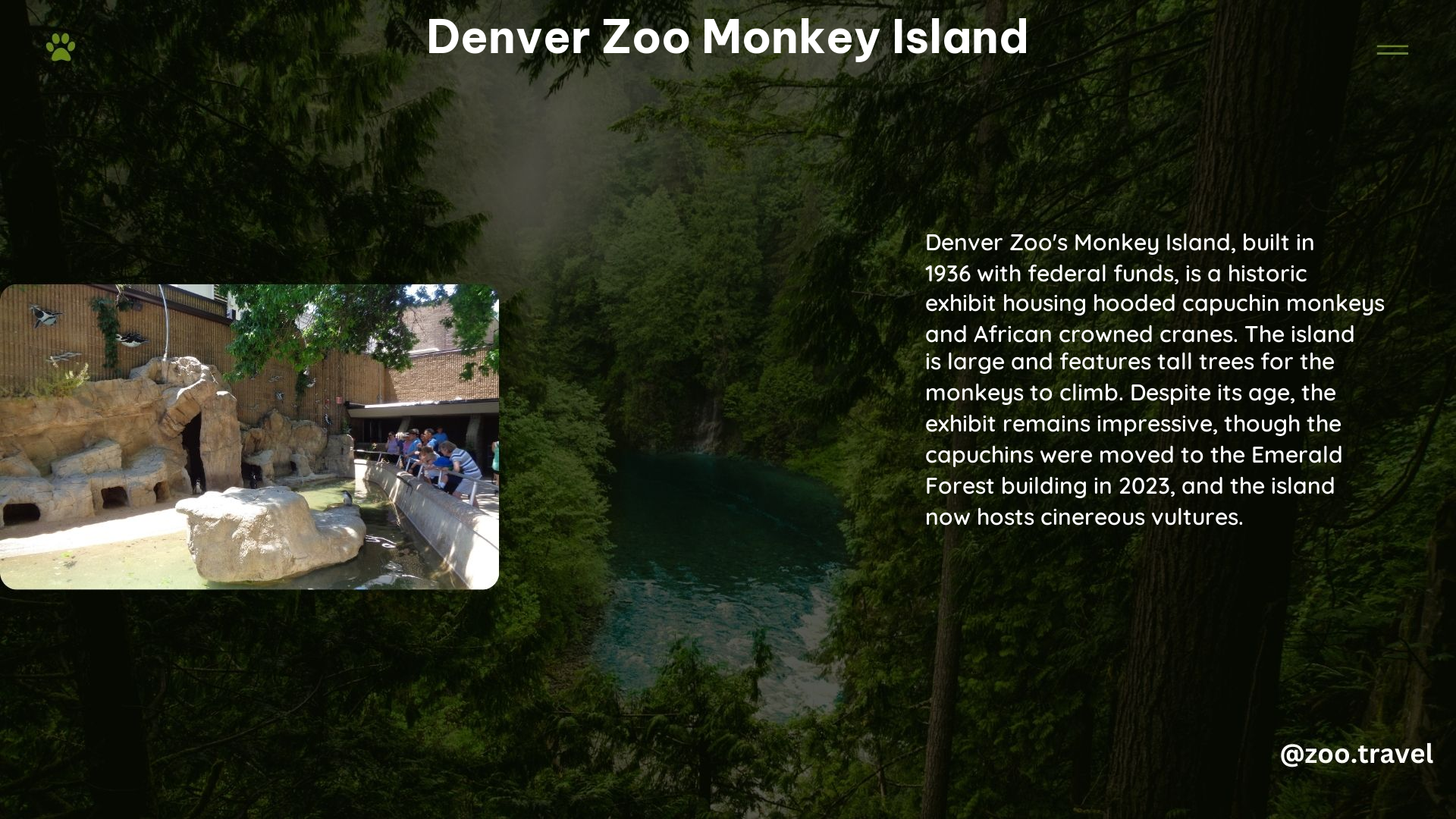Denver Zoo Monkey Island is a historic exhibit located near the Mountain Sheep Habitat within the Denver Zoo. This iconic exhibit has a rich history dating back to the 1930s and has been a beloved part of the zoo’s primate collection for decades.
History of Monkey Island

Monkey Island was built in 1936 with funds from the Works Progress Administration, a New Deal agency that aimed to provide employment and infrastructure during the Great Depression. The island was designed to serve as a natural habitat for a variety of primate species, and it quickly became a popular attraction at the Denver Zoo.
In 1950, the exhibit underwent a major rehabilitation, which helped to modernize the facilities and improve the living conditions for the resident primates. Since then, Monkey Island has remained an integral part of the zoo’s primate exhibits, showcasing a variety of species and providing visitors with a unique opportunity to observe these fascinating animals in a semi-natural setting.
Current Status of Monkey Island

As of 2023, the hooded capuchin monkeys that were previously housed on Monkey Island have been relocated to the Emerald Forest building within the Denver Zoo. This move was likely made to provide the capuchins with a more suitable and enriching environment, as the Emerald Forest building offers a larger and more diverse habitat.
In the wake of the capuchin’s departure, Monkey Island is now home to a new species: the cinereous vultures. These large, majestic birds of prey have taken up residence on the island, adding a new and exciting element to the exhibit.
Activities and Demonstrations at Monkey Island
One of the key attractions at Monkey Island is the daily “Capuchin Monkey Talk” demonstration. This event, which takes place at 9:15 a.m. each day, provides visitors with an up-close look at the daily routines and behaviors of the capuchin monkeys. During the demonstration, visitors can observe the monkeys as they travel through a hidden tunnel and engage in their natural behaviors.
While the capuchin monkeys are no longer present on Monkey Island, the zoo may continue to offer similar demonstrations featuring the cinereous vultures or other primate species that may be housed on the island in the future.
Species Found on Monkey Island
Hooded Capuchin Monkeys
Prior to 2023, Monkey Island was home to a troop of hooded capuchin monkeys. These intelligent and social primates were a popular attraction at the zoo, and visitors could observe them as they moved through the exhibit and interacted with one another.
Cinereous Vultures
As of 2023, Monkey Island is now home to a group of cinereous vultures. These large birds of prey are known for their impressive wingspan and their important role in the ecosystem as scavengers. Visitors to the Denver Zoo can now observe these majestic birds as they soar over the island or perch on the rocks.
Other Notable Features of Monkey Island
In addition to the primate and avian residents, Monkey Island also features a historic structure known as the Monkey House. This brick building, which faces the island, was once used as a winter residence for the capuchin monkeys. While the building is no longer in use, it serves as a reminder of the exhibit’s long and storied history.
Visitor Information
Monkey Island is located within the Denver Zoo, near the Mountain Sheep Habitat. Visitors can access the exhibit during regular zoo hours, and the Capuchin Monkey Talk demonstration takes place daily at 9:15 a.m.
For more information on Monkey Island and other exhibits at the Denver Zoo, visitors can consult the zoo’s official website or explore resources such as the Wikipedia page and the ZooChat forum.
